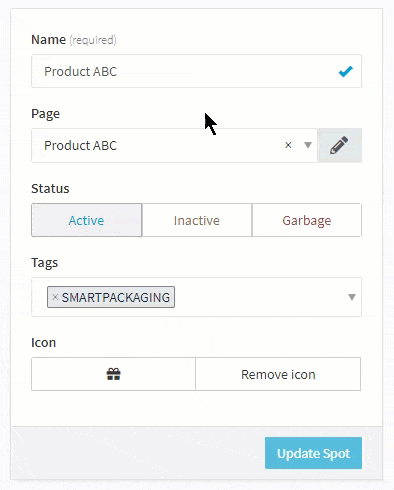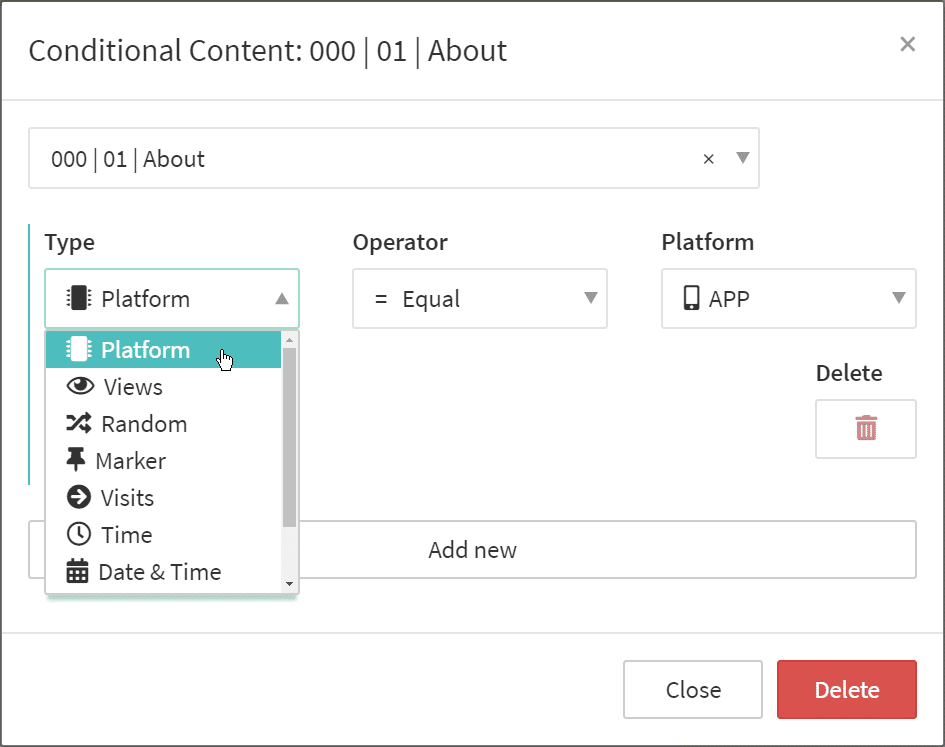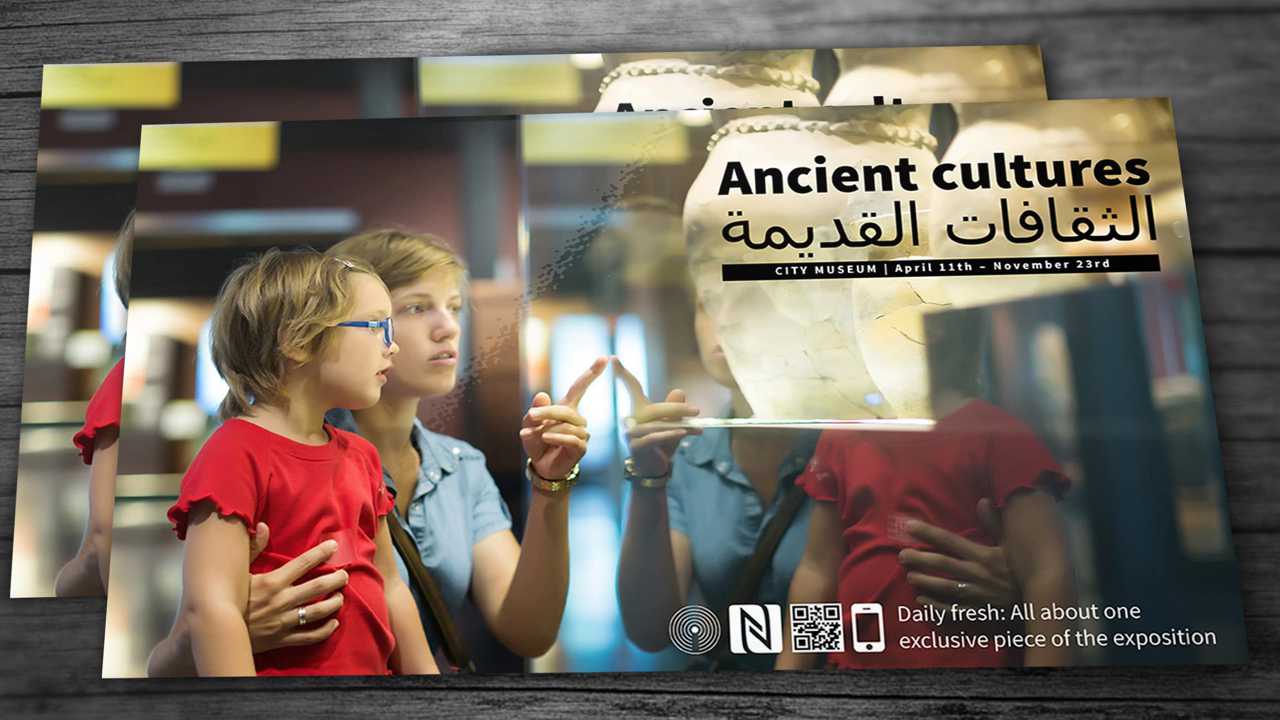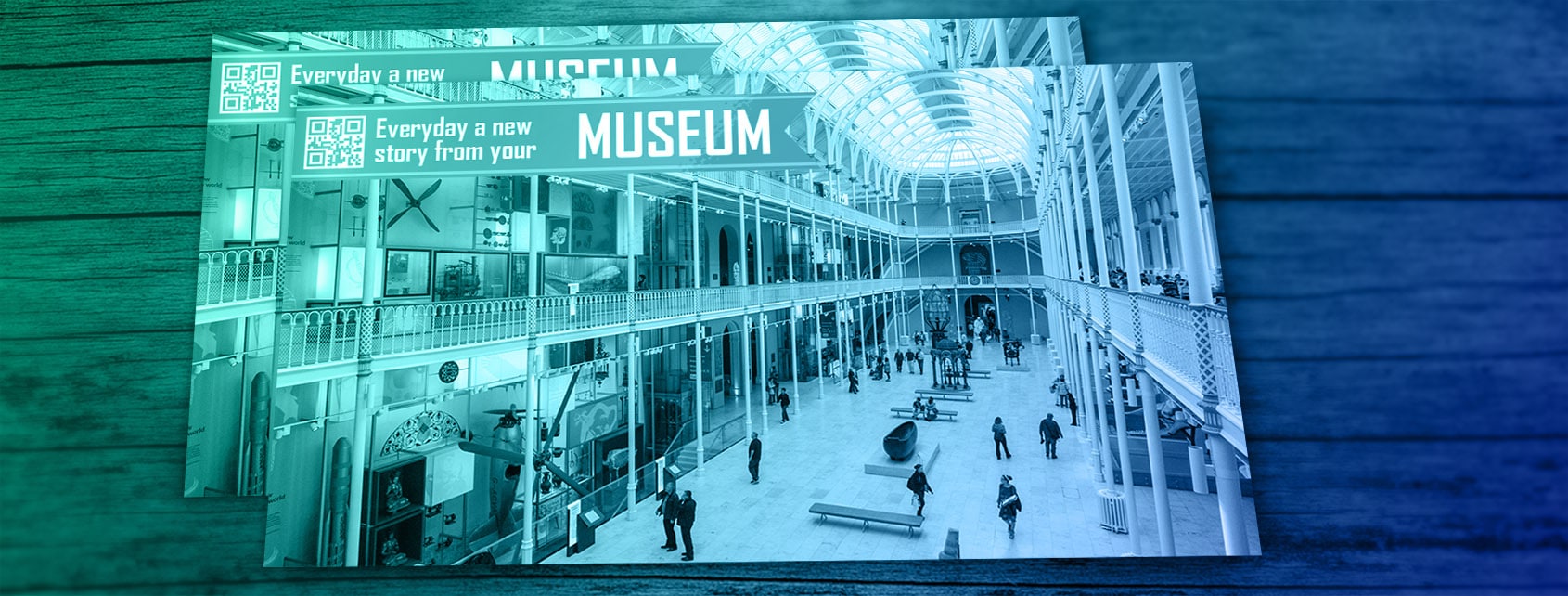Everyone can add a QR code to postcards or other printed materials (brochures, manuals, stickers, catalogs, etc.). However, such a QR code retains its content for its lifetime. It is different with dynamic URLs like those used by xamoom. They add previously unknown flexibility to your mobile marketing.

What are dynamic URLs?
Until now, a URL (e.g. m.mydomain.com/productabc) mostly defined the location of a page on the web server. We have changed this principle and use URLs to define locations (e.g. houses, sightseeing points) or objects (product packaging, printing material, etc.). The only difference: Unlike places, objects cannot appear on maps.
We refer to places or objects as spots. Each spot has a page assigned to it. This assignment can be changed at any time with just three mouse clicks. For example, you can advertise a new product XYZ on a product ABC.
Automatic adjustment of pages
We go one step further and not only allow manual changes (see animation on the right), but also the automatic adaptation of the page to the situation or the user. Here are some examples of what is possible:

- Date and time: Content can be changed automatically depending on the day or time. Possible applications for this would be different recipes on packaging depending on the time of day, daily sweepstakes or the daily changing program at a congress.
- Randomness: One page and then the other page can be played using a random generator. It can be used for an A/B test as well as a sweepstake.
- App or web (platform): Different pages can be displayed, depending on whether the user is on the mobile web or within the app. On the mobile web the app can be promoted as the single location where sweepstakes take place.
- Access technology (marker): Does the request come via a QR code, NFC tag, geofence or iBeacons? Soon you can use the individual URLs (Custom Marker IDs) for what opens up new applications such as custom coupon codes. Depending on the technology, customized pages can be displayed.
- Views can limit the maximum number of prizes in a sweepstake or to offer a surprise for the first 100 users. With this you could also celebrate the 1000th visitor.
- Visits: How often was a QR code scanned or how often was a user actually on site (iBeacon)? This feature is used to reward someone who has been often on site (loyalty program on a cell phone). You can also give the user a different content with each visit/scan.
- Developers can use their own variables to ensure that they respond very precisely to the visitors (children or parents?).
We call this technique conditional content – content that is served on a certain conditions. A variety of conditions can be linked using Boolean algebra (AND/OR). There can be any number of conditions per spot.
How the postcard gets smart

Postcards are still popular advertising media. Today, however, they are less often mailed but rather used for home decoration, which increses the need for great design.
What options are there with a printing materials (e.g. postcard or brochure) in mobile marketing?
- A/B testing: You randomly serve one page and then the other and test which content (text, title, images, etc.) performs better (e.g. more ticket sales or newsletter subscriptions).
- Sweepstakes: You can increase the use of such print products, for example by promising that every 1000th user will receive a free ticket or an e-book.
- A new content every day/week: the timing of content also leads to more relevance and thus increased usage.
- The same is true if you get new content with every scan. So there is always a moment of surprise.
- Reward loyalty: With xamoom you can identify who is a loyal customer or frequent visitor. Even those who use the print product frequently can be rewarded with real goodies for their loyalty.
- App marketing: If an audio guide is exclusively available in the app, the number of app installations can be increased. Because not everyone uninstalls the app after leaving the museum or using the postcard, you get a powerful marketing tool that can be used later on for push messages.
A promising print-mobile-combination
There are a lot of good reasons for augmenting print products with QR codes and/or NFC tags. But you only benefit if the various possibilities are used consistently. What are the benefits?
- More app installations by demonstrating the benefits and added value of the app
- Higher usage through more relevant and exciting content compared to serving the same to everyone
- Higher engagement with the brand, institution, tourism destination or exhibition
Regardless of whether static or dynamic URLs are used … the museum or the destination management of the holiday region fulfills its purpose better and more often than would be possible in real life – especially in times like this with the coronavirus COVID-19.
Get started today
Try for your own what xamoom can do to unleash new revenue potential for your business.
easy start – no credit card needed
A guided tour through xamoom
